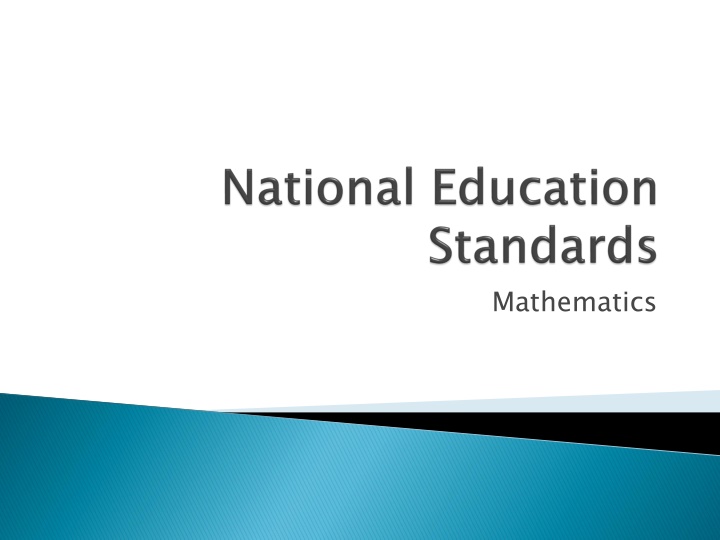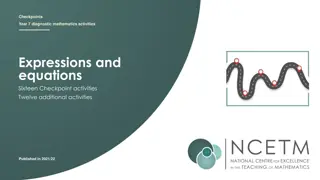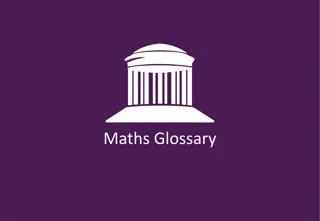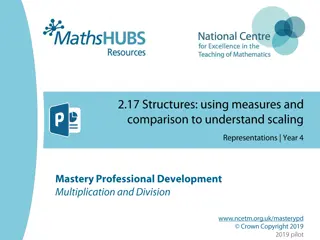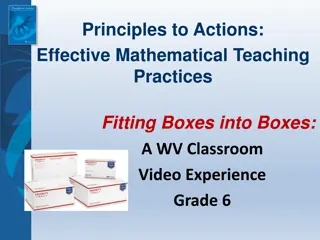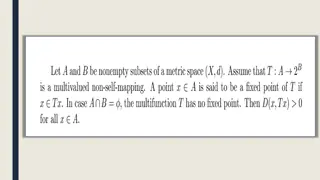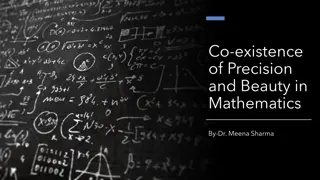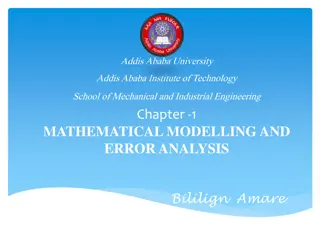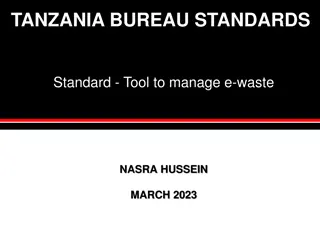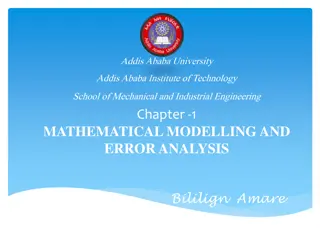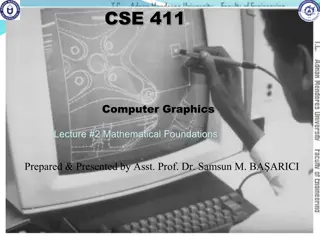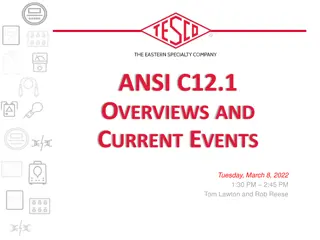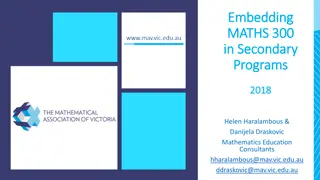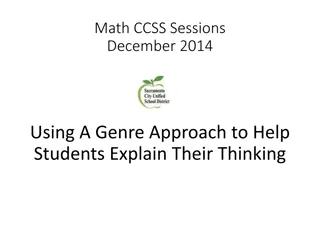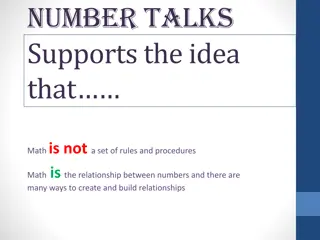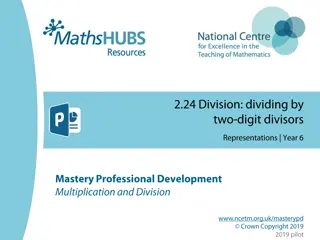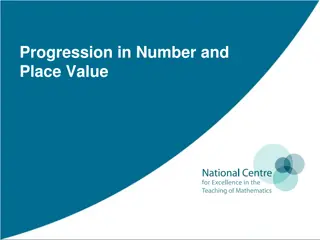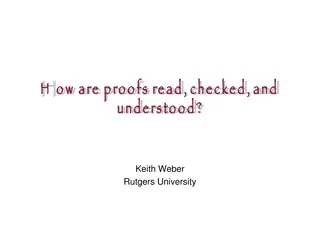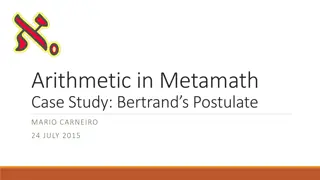Mathematical Concepts and Standards
Mathematics encompasses various categories such as number properties, operations, geometry, data analysis, and statistics. Understanding these concepts is vital in building a solid foundation in mathematics. The structure of standards may not be crucial, but involving mathematicians can make picking content easier. Ensuring clarity through simple, precise language is key in instructional design. Additionally, activities like comparing numbers, solving proportions, and working with fractions and decimals help reinforce mathematical understanding.
Download Presentation

Please find below an Image/Link to download the presentation.
The content on the website is provided AS IS for your information and personal use only. It may not be sold, licensed, or shared on other websites without obtaining consent from the author.If you encounter any issues during the download, it is possible that the publisher has removed the file from their server.
You are allowed to download the files provided on this website for personal or commercial use, subject to the condition that they are used lawfully. All files are the property of their respective owners.
The content on the website is provided AS IS for your information and personal use only. It may not be sold, licensed, or shared on other websites without obtaining consent from the author.
E N D
Presentation Transcript
Organization is difficult. Categories are hard to pick. How is it done?
Number Quantity Expressions Equations Functions Modeling Shape Coordinates Probability Statistics
Number properties and Operations Measurement Geometry Data Analysis, Statistics, and Probability Algebra
4thgrade Number Geometric Shapes and Measures Data Display 8thgrade Number Algebra Geometry Data and Chance
Space and shape Change and relationships Quantity Uncertainty
But, it isnt that important. The structure of the standards doesn t matter that much.
Picking content is easy! Involve mathematicians. Oops! What s your image of mathematicians? Your image is wrong! Think: Mathematicians are 13thgrade teachers. Survey us. Look at our placement tests. Easy!
PISA They don t bother. Not about math. NAEP Has content and kitchen sink. Common Core Thinks (minimal) college readiness. TIMSS Listens to mathematicians.
Clarity is easy. Use simple, precise, mathematical language.
Compare and order whole numbers. Solve problems involving proportions. Compute with fractions and decimals. Solve problems involving percents and proportions. Very nice, straightforward, clear.
Know when and how to use standard algorithms, and perform them flexibly, accurately, and efficiently. Clean it up! Know how to use standard algorithms efficiently. Do you really have to mention accurately?
Create and translate between different representations of algebraic expressions, equations, and inequalities (e.g., linear, quadratic, exponential, or trigonometric) using symbols, graphs, tables, diagrams, or written descriptions. Yikes! Analyze by counting. Forget create. Use only translate.
Expressions Equations inequalities
Linear Quadratic Exponential trigonometric
Symbols Graphs Tables Diagrams Written descriptions
20 different translations 4 different functions 3 different mathematical relationships Total: 240 standards in one sentence! Oops, forgot create 3x4x5=60 Total: 300 standards in one sentence! Clarity, simplicity? No!
Elegant computations Recognizing shapes and patterns Representing changes in a comprehensible form Understanding the fundamental types of change This is not guidance with clarity!
Some parts of standards are not as important as other parts of the same standard. Some standards are not as important as other standards. Some content areas are not as important as other content areas.
Create and translate between different representations of algebraic expressions, equations, and inequalities (e.g., linear, quadratic, exponential, or trigonometric) using symbols, graphs, tables, diagrams, or written descriptions. Tables to written descriptions, not as important as symbols to graphs.
Compute with fractions and decimals. Use data from experiments to predict the chances of future outcomes. One is essential math. One is pretty important science.
Probability and statistics are reasonable But They are 24% of the total standards. That s unreasonable.
TIMSS does it. They tell you what percentage of their test will be on each area. Others don t succeed. Even if you pick standards that are all absolutely essential, some take more time. It is a difficult problem.
